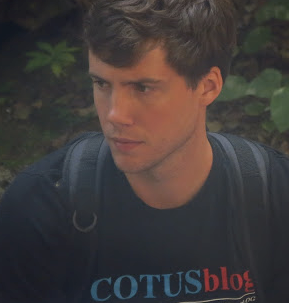The red and the black: Sacco and Vanzetti’s lesson for Justice Holmes

on Nov 21, 2016 at 2:44 pm
Most lectures organized by the Supreme Court Historical Society take place in the courtroom – literally and, in terms of their content, figuratively. The lecturer may provide some context for landmark cases – bakeries in New York or slaughterhouses in New Orleans – but those locales aren’t where the action happens. Last Wednesday, in contrast, the justices who figured in University of Wisconsin professor Brad Snyder’s story didn’t set foot in their former chamber until the final minutes of Snyder’s lecture. Instead, the audience met Justice Oliver Wendell Holmes in his summer home in Beverly Farms, Massachusetts; Justice James McReynolds in heated debate with (future justice) Felix Frankfurter over dinner at a Washington row house; Justice Louis Brandeis arguing on his front porch in pajamas; Justice Harlan Fiske Stone on a remote island off the coast of Maine, reachable only by chartered fishing boat; and Chief Justice William Howard Taft on the phone in Point-au-Pic, Quebec. This was the summer of 1927, and the justices were on recess. Nicola Sacco and Bartolomeo Vanzetti, however, alleged anarchists and convicted murderers, were pleading for their lives. After six years of appeals, their execution date approached.
In retelling this tale, Snyder depicted not a staid and methodical court, but justices of intrigue and action, and he did not shy away from the case’s grisly facts. A brutal double-murder and a payroll robbery of $15,000. A jury foreman telling jurors who doubted Sacco and Vanzetti’s guilt, “damn them, they ought to hang.” A trial judge joking with his friend as they watched a Harvard-Dartmouth football game, “did you see what I did to those anarchist bastards?” Death threats mailed to Holmes and Brandeis, whom the Daily Worker, the newspaper of the Communist party, labeled a new Pontius Pilate. The elite of “Old Boston” distrustful and divided. Frankfurter, recruiting legal defense and planning a public-relations strategy for the defendants, wiretapped by police. Eight hundred officers, with machine guns and fire hoses, preventing Sacco and Vanzetti from armed rescue. The governor of Massachusetts temporarily halting the execution, with only minutes to spare. Marion Denman, Frankfurter’s wife, fainting on Beacon Hill. And in the end, two men, all appeals exhausted, killed by the electric chair.
Although Snyder described the case in vivid detail, he also focused his argument on Holmes’ thinking and decisions throughout the tense summer leading up to the execution. Sacco and Vanzetti’s lawyers, rebuffed by the Supreme Judicial Court of Massachusetts, aimed at convincing a justice to issue a temporary stay of execution until the U.S. Supreme Court could fully review whether the two men had received a fair trial. According to Snyder, these lawyers saw Holmes, one of the court’s two most progressive justices, as their best hope for obtaining the stay. (Brandeis, another progressive justice, recused himself from the case, because his wife, Alice, had made a significant donation to Sacco and Vanzetti’s defense fund.)
The lawyers’ optimism about Holmes, Snyder explained, stemmed from the justice’s response to another capital sentencing appeal earlier that summer.
According to Snyder, after a photo circulated in Madisonville, Kentucky, of a white prostitute surrounded by black men, police arrested coal miner Nathan Bard and chauffeur Bunyan Fleming for rape. Three days later, an all-white jury convicted the two men and sentenced them to death. Fleming had been allowed to confer with his lawyer for only twenty minutes, Bard for no time at all. Police also jailed Fleming’s wife and prevented Bard’s wife from entering the courthouse, so that the women could not provide exculpatory testimony for their husbands. An appellate judge expressed concern about the fairness of the trial, but still upheld the conviction and sentence. Lawyers for Bard and Fleming appealed to Holmes. In a decision that, as Snyder noted, made front-page news in black presses around the nation, but which white papers completely ignored, Holmes stayed Bard and Fleming’s execution until the pair could submit a petition for review to the Supreme Court.
To Sacco and Vanzetti’s legal team, Snyder continued, the cases presented essentially the same situation: Mob mentality had infected and tainted a trial’s fairness. However, Holmes strongly disagreed with this assessment. Bard and Fleming had been convicted on federal charges, but Sacco and Vanzetti had been found guilty under state law. As a federal justice, Holmes did not believe he could legally intervene in such a case. Holmes also made a more powerful point: The mob had accused, captured and convicted Bard and Fleming in only three days. Although Holmes acknowledged that anti-Italian and anti-communist prejudice might have played a role in Sacco and Vanzetti’s trial, the best legal-defense team in the nation had been pursuing appeals on their behalf for six years. The cases, to Holmes, were not comparable.
To Holmes, the contrast between the two cases prompted a pressing question: “why this so much greater interest in red than black?”
Snyder explained that Holmes saw Bard and Fleming’s cases as an opportunity to educate his fellow justices, who had previously paid little attention, about the plight of blacks suffering injustices in the legal system.
At first blush, Holmes’ effort did not pay off. The Supreme Court rejected Bard and Fleming’s petition for review. On November 25, 1927, the two men were hanged in the Hopkins County, Kentucky, jail yard, as thousands watched.
Yet the story did not end there. Snyder concluded his talk with a brief mention of another famous capital case, that of the “Scottsboro boys,” nine black teenagers falsely accused in Alabama of raping two white women on a train, whose convictions the Supreme Court – which by then did not include Holmes – overturned in 1935. The lesson Holmes drew in 1927 from the plight of Bard and Fleming, it would seem, had not gone unnoticed.


